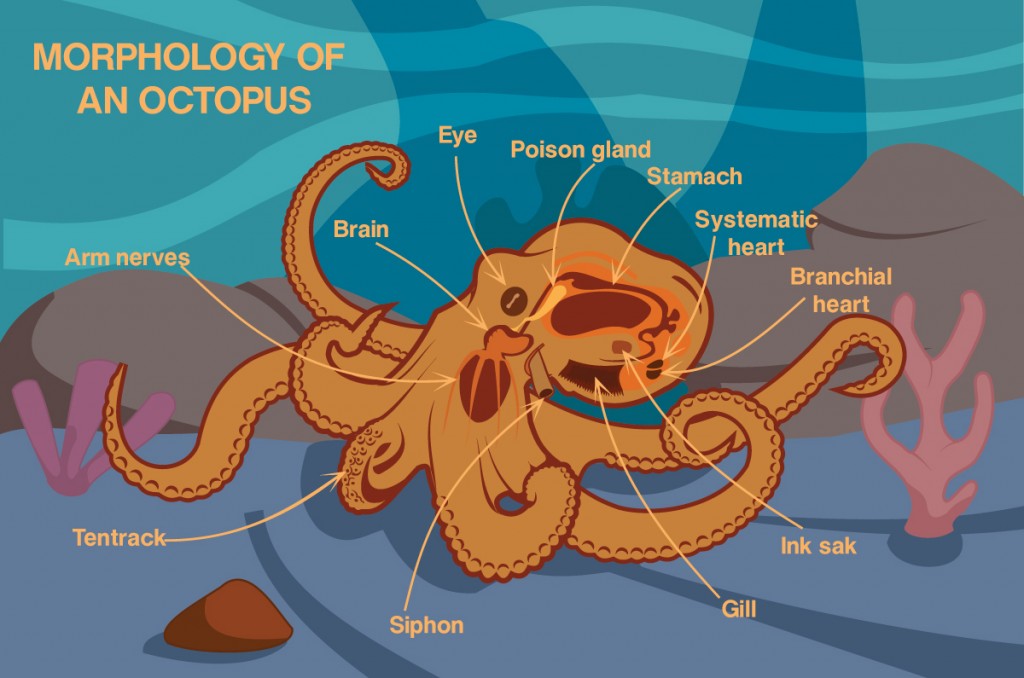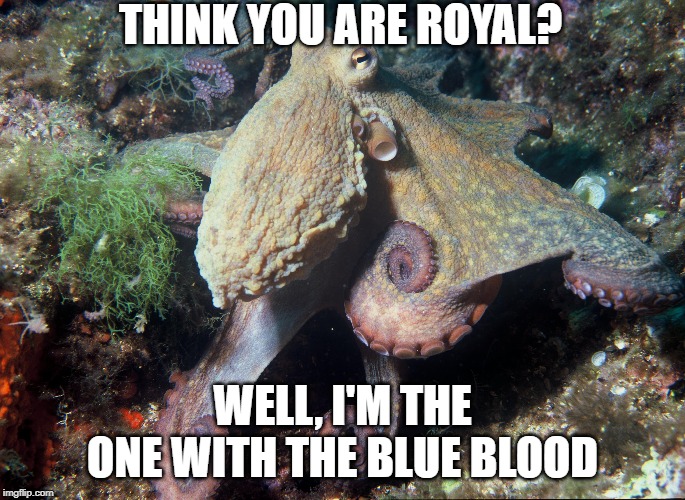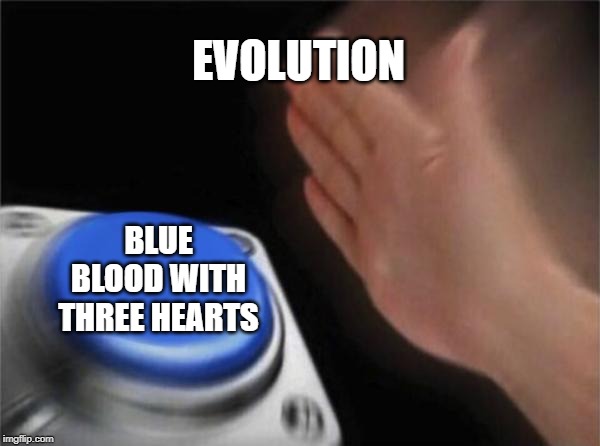Table of Contents (click to expand)
Octopuses have three hearts because they transport oxygen using hemocyanin, which is less efficient than hemoglobin at transporting oxygen.
We have a single powerful heart pumping blood throughout our entire body. Most other mammals and animals have a single heart that circulates oxygen and nutrients throughout the body. All these single hearts might not look or function the same, but they get the job done.
Now meet the cephalopods—the squid, octopuses, and cuttlefish (also nautiloids, but we’ll come to them later) living in the sea. They weren’t happy with just one heart, so they went and evolved themselves three. Their three hearts together serve to pump blood throughout their flexible and mostly boneless body to supply oxygen.
Why do they need three hearts instead of the single heart that works for so many others in the animal kingdom?

How Octopuses Circulate Their Blood
Cephalopods have a closed circulatory system, the only class in the phylum Mollusks that do (this is the same phylum to which snails and clams belong). A closed circulatory system means that their blood flows within vessels, unlike an open circulatory system, where all the blood or hemolymph bathes all the tissues, such as is found in insects, prawns and other mollusks.
The three hearts in cephalopod circulation have different functions. There is the main heart, like our one human heart, called the systemic heart that pumps the blood throughout the body. The other two hearts are the branchial hearts or the gill hearts, located near each gill. All these structures are in the mantle, a muscular structure right behind the head of the cephalopod. The mantle also houses other organs, such as the digestive system and reproductive glands.

The actual movement of the blood through the three hearts isn’t that unusual. The deoxygenated blood returns to the systemic heart from the rest of the body. The systemic heart reroutes this blood to the branchial hearts. The branchial hearts then send the blood to capillaries in the gills to get oxygenated. This oxygenated blood is sent back to the systemic heart, at which point it makes its way to the rest of the body to replenish its tissues with oxygen. And so, the process repeats itself.
Other animals have a similar system set up, but instead of two more hearts, blood is sent directly to the lungs or gills to get its oxygen. Humans have the pulmonary artery arising from our heart, which takes deoxygenated blood to the lungs to get oxygenated. The pulmonary vein brings oxygen-rich blood back to the heart for distribution.
The reason cephalopods take the three-heart route, rather than the direct route, might have to do with their blood.
Also Read: Two &Amp; Three Chambered Hearts: How Do They Work?
Octopus’s Blood Is The Reason For Its 3 Hearts
We might call royalty ‘blue-blooded’, but the true ‘blue bloods’ are the cephalopods. Unlike our blood, which is red due to our iron-containing oxygen transporter hemoglobin, the cephalopods use a copper-containing protein called hemocyanin. The hemocyanin, when bound to oxygen, gives their blood a blue color.
When the protein isn’t bound to oxygen, it turns transparent! You won’t see this transparent deoxygenated blood because on contact with oxygen in the water or in the atmosphere, the blood with turn blue again.

Hemocyanin isn’t as efficient at transporting oxygen as hemoglobin. Hemocyanin’s copper binds to oxygen non-cooperatively, whereas hemoglobin’s iron binds to oxygen cooperatively.
Furthermore, when hemoglobin is partially oxygenated, due to conformation changes in the protein, its affinity to oxygen increases further.
However, hemoglobin isn’t great at low temperatures, where more early cephalopods resided. In these low temperature, low-oxygen pressure environments, hemocyanin had the upper hand.
Hemocyanin, unlike hemoglobin, which is present within red blood cells, is a free-floating protein complex within cephalopod blood, which makes their blood more viscous. Not being inside a cell might aid in its oxygen transport capabilities at low temperatures.
To compensate for the otherwise lowered oxygen transport efficiency and increased viscosity, cephalopods needed to circulate their blood at higher pressures. The solution was developing three hearts. Over years, octopuses and squids ascended to warmer shores, making their three hearts pumping blood at a higher pressure very important.
All of that being said, not all creatures that have blue blood need three hearts. The cephalopod nautilus, the mesmerizing spiral-shelled marine animal, only has a single heart that pumps blood, unlike its three-hearted relatives. It probably doesn’t need the two extra hearts because of their relatively smaller size and the creature’s very sedentary lifestyle.
Arthropods like the famous horseshoe crab and some scorpions also have blue hemocyanin blood. The arthropod hemocyanin differs from molluscan hemocyanin in structure and protein subunits. The arthropods might not have evolved three hearts because with their open circulatory system, they didn’t need three hearts.

Also Read: Why Do Squids And Octopuses Have Blue Blood?
Conclusion
Even with these three hearts, octopuses and squids can’t bolt around carefree. In fact, octopuses prefer a more laid back lifestyle because their systemic heart cannot take an intense cardio workout.
When an octopus has to swim fast to catch prey, its systemic heart will tire and stop after a while forcing the octopus to stop and recover. This is why you probably won’t see an octopus actively zooming about in the ocean. To preserve energy and not tire out their heart, they prefer to scurry and crawl on the ocean floor, always moving, always watching.
The late Dr Martin Wells, cephalopod researcher, enthusiast and beloved teacher, once said that the octopus is an alien. Well, with three hearts, blue blood, and those oddly sentient-looking eyes, they might as well be!
Alien or not, we love them in all their zany glory!
Also Read: How Smart Is An Octopus?
How well do you understand the article above!

References (click to expand)
- van Holde, K. E., Miller, K. I., & Decker, H. (2001, May). Hemocyanins and Invertebrate Evolution. Journal of Biological Chemistry. Elsevier BV.
- BONAVENTURA, J., & BONAVENTURA, C. (1980, February). Hemocyanins Relationships in Their Structure, Function and Assembly. American Zoologist. Oxford University Press (OUP).
- Wells, M. J. (2013). Octopus: Physiology and Behaviour of an Advanced Invertebrate. Springer
- Cephalopods | Smithsonian Ocean. The Smithsonian Institution
